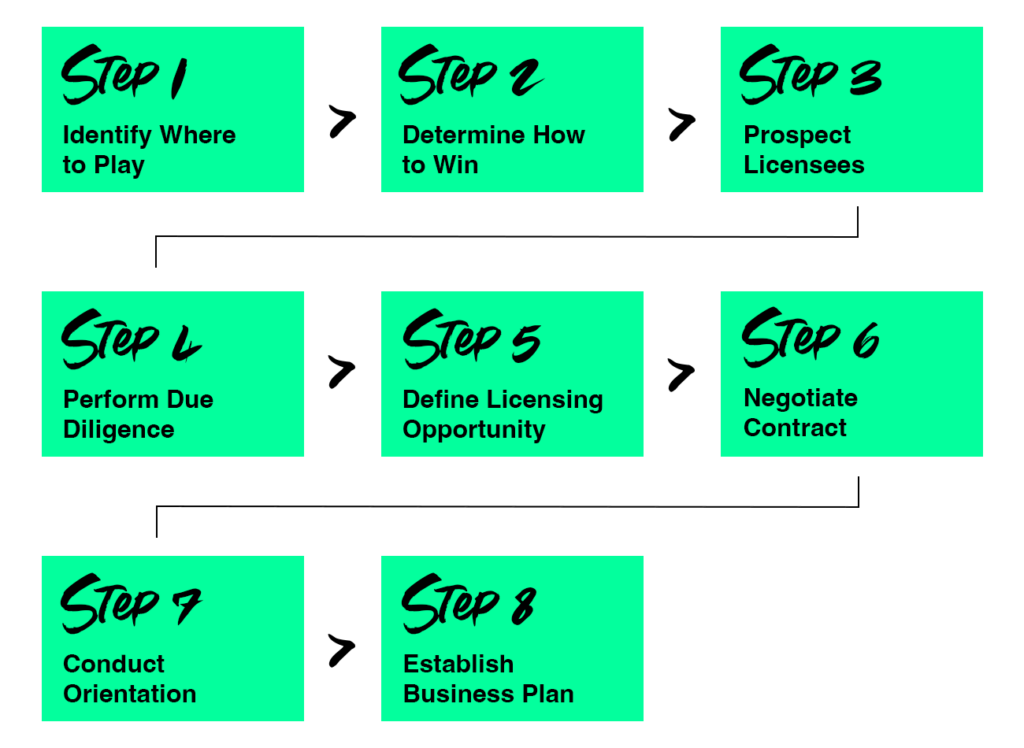Licensing means nothing more than the renting or leasing of an intangible asset. An arrangement to license a brand requires a licensing agreement. A licensing agreement authorizes a company, which markets a product or service – a licensee – to lease or rent a brand from a brand owner who operates a licensing program – a licensor.
While the list of brand licensing examples is as broad and varied as the mind can ponder, there is one thing in common among all successful brand licensing programs. Each has a brand that is well known and loved among its target market. And, while the consumer may not have demanded the product or service before it was created, she was certainly glad to discover it after the fact.

Situation: Mickey Mouse was created in 1928 by Walt Disney and Ub Iwerks. In 1934, at the height of the Depression, General Foods, the makers of Post Toasties, paid $1 million for the right to put Mickey Mouse cut-outs on the back of cereal boxes. In one day, Macy’s New York sold a record 11,000 timepieces featuring the Mickey Mouse image. In 2003, Mickey turned 75. But despite its previous success, America’s favorite mouse had lost his connection with consumers and needed to be revitalized.
Task: Revitalize Mickey with consumers.
Actions: Use Mickey’s birthday to increase Mickey’s relevance through a new apparel line. Disney collaborated with the hottest designers to create a high-end vintage program through upscale Los Angeles-based clothing retailer, Fred Segal. To promote the line, Mickey was seated with celebrities who wore the clothes at marquee events and was featured in top shows including Sex and the City.
Results: The program created tremendous buzz and Mickey was back reviving the character. It also changed the perceptions of Disney as a company, so that it was now viewed as a major fashion player. The program consistently ranks on Women Wear Daily’s WWD100 list of most influential fashion brands. Even more compelling was that the apparel program had no specific entertainment aspect. The program was created simply to remind consumers why they love Mickey Mouse.
Situation: Around 1989 some retired firemen opened up a bar in Brooklyn called the ‘Brooklyn Dodger’. Peter O’Malley, the owner of the Los Angeles Dodgers couldn’t believe this could happen. The Dodgers had never trademarked their rights to the Brooklyn Dodgers and had little recourse.
Task: O’Malley said, “How can I ever prevent this from happening again?”
Actions: Rick White, CEO MLBP replied, “There is only one way to do this. You need to create products that says Brooklyn Dodgers and sell it in interstate commerce.”
Results: Out of that discussion was created the Cooperstown Collection. In its first year, the collection generated over $30 million in royalties through $600 million in sales.
Situation: Walmart had a flourishing backyard furniture business but wanted to shift indoors.
Task: Tie-in with Better Homes and Gardens enabled them to reach out to house-proud consumers and find new ways to fall in love with their home again.
Actions: The success of that initiative enabled Better Homes and Gardens to cultivate new product lines with new customers.
Results: Helped Walmart to change the conversation they have with this consumer group from one focused on the practicality of polyester to one based on aesthetics and entertainment. Helped BH&G by enabling consumers to make decisions in-store that enable them to bring their desired lifestyle home in order for their home to look more like the magazine.
I wanted to share a few examples of licensing so you can better understand the ways in which the licensing process works, but the case studies above are just snapshots. I’ve written many books that can help you dive deeper into the licensing world. Check them out by visiting our store.
Reach out to Pete at pete@petecanalichio.com to learn more about how you can license your brand. For more specific requests, you can also reach out by filling out our contact form.